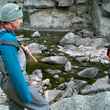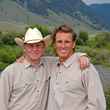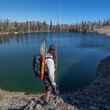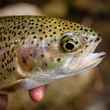Northern Dynasty Minerals (NAK) is soon to be the sole owner and force behind the Pebble Limited Partnership (PLP) -- the joint venture formed to blueprint and eventually develop a mine at the site of the Pebble deposit in Bristol Bay, Alaska -- has seen its stock shed over a whopping 35 percent since former partner Anglo American announced earlier this week that it would be pulling out the Pebble Mine project at an expected cost of over $300 million dollars.
The announcement obviously has investors worried, evidenced by the big sell-off of stock. According to a report filed by Mining.com, this sell-off may be a result of investor concern regarding whether or not Northern Dynasty has the financial chops required to develop the Pebble site on its own.
In regards to Anglo American's withdraw from the project, the reported noted, "with those funds off the table it is difficult to see how Northern Dynasty – now worth $140 million in Toronto – could come up with estimated $80 million a year needed to advance the project to its earliest possible construction start date of end-2017."





























